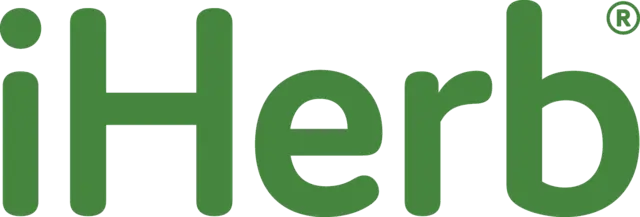Dandelion Root
Find more ingredients:
Teeccino's Detoxifying Herb
Roasted organic dandelion root (Taraxacum officinale), an ingredient featured in Teeccino’s Dandelion Herbal Coffees & Teas, has a long history of use as a coffee alternative in Europe and the Americas. Several articles in the early 1800s referred to pioneers drinking dandelion coffee in rural areas of America where coffee wasn’t yet available. Later, in the early 1900s, roasted dandelion root was marketed as an inexpensive coffee.
The medicinal use of the plant dates back to ancient China where it was first mentioned in the Tang Materia Medica written in 659 B.C.E. Later it appears in medical journals written by Arab physicians in the 10th century. The botanical name may refer to dandelion’s use for treating many health disorders. It is derived from the Greek word “taraxos,” which means disorder, combined with “akos,” which is Greek for remedy.
Today, dandelion root coffee is enjoying a resurgence in popularity due to its reputation for stimulating the liver and bile flow and for being a diuretic.

Health benefits of dandelion
Dandelions have a long tap root that is dark brown on the outside, but milky white on the inside. Its bitter notes come from its glycoside, taraxacin, along with other terpenoids that are thought to have a beneficial effect on the liver and stimulate digestion. Dandelion has a reputation for being a mild diuretic.
Dandelion root also contains polysaccharides and inulin, which may be responsible for some of the immune-stimulating effects that some studies have suggested. Dandelion root’s inulin content is slightly lower than chicory root, but still quite high compared to other common foods.
Some scientific studies show dandelion root to be effective in blood sugar balancing probably due to the effect of inulin which nourishes probiotics that are involved in metabolizing glucose for use in the liver.1
Although there are very few studies performed on dandelion root and leaf, the German Commission E monograph for dandelion root and herb approves its use for “disturbance of the bile flow, stimulation of diuresis, loss of appetite, and dyspepsia.”2 The German Commission E is recognized worldwide for its authority on approved medicinal uses of herbs.
Finding the right dandelion species
We all know this daisy-like plant with its bright yellow flowers that grows like a “weed” and is the scourge of manicured lawns. Recently, organic farmers have started growing a variety of dandelion for its leaves, which are becoming popular in salads despite their bitterness. Amazingly though, the root is still primarily wild harvested in its native area of Eastern Europe where the true species, Taraxacum officinale, grows wild in fields.
Teeccino’s organically grown dandelion root comes from Eastern European countries where it is wild harvested. From other countries, different varieties of Taraxacum are sold as dandelion root, but these may not have the same health benefits as Taraxacum officinale. Purchasing only top quality, certified organic dandelion roots that are verified to be Taraxacum officinale is part of our mission to deliver products that promote optimal health for our customers!
The growing popularity of dandelion tea due to a number of highly influential healthcare practitioners touting its detoxification benefits has caused a worldwide shortage of dandelion roots. Caroline’s skills at developing new sources of dandelion are being put to good use!
Drought and over-harvest, however, are making even this abundant plant harder to find. Mature roots are best harvested after two years of growth, but the demand has driven the harvest of young roots, thereby diminishing their quality. Wild-harvested roots also tend to come from many different collectors, not all of whom take care to keep extraneous material like wood and other plant parts out of the lot.
The Chinese have jumped into cultivating dandelion roots to help fill the supply gap. However, due to the wide variety of subspecies of Taraxacum officinale, tests show that the roots with the highest active ingredients come from dandelion’s native habitat in Europe. Even dandelion roots from Morocco have turned out to be a different subspecies with extreme bitterness that makes them undrinkable.

Sourcing wild dandelion roots
At Teeccino, we strive to bring the best quality herbs with the highest concentration of active ingredients into your cup. Our wild-harvested dandelion roots come from the rural meadows of Bulgaria and Poland. Caroline is also working to increase supply by providing organic farmers in Bulgaria, Austria and Herzegovina with seed and partnering with agricultural experts on root crops to help ensure a successful harvest. By cultivating organic dandelion roots in the same areas as their wild habitat, we hope to meet the demand for this important herb with the highest quality roots possible.
Roasted in France
A primary concern at Teeccino is producing the superior roast of our all our roasted ingredients including dandelion roots. We roast our Eastern European dandelion roots in France with the same small, family-owned business that roasts our chicory. Their custom-built roasters produce an ideal roast of both chicory and dandelion roots. We import containers of freshly roasted roots every month or two from France for our blends. Since there are no oils in dandelion or chicory roots like there is in coffee, roasted dandelion and chicory roots don’t spoil or go rancid like coffee does, allowing for a much longer shelf life.

Teeccino Dandelion blends are certified gluten free and 100% barley free
In Teeccino’s Dandelion Herbal Coffees & Teas, dandelion root replaces barley to create certified gluten-free herbal beverages. With the detox health benefits of dandelion root, these blends have created a special niche in Teeccino’s collection families. To see all of Teeccino Dandelion blends, search for Dandelion Blends under the filter for “Collections”.
Reference
- https://news.weill.cornell.edu/news/2020/02/gut-microbiome-controls-blood-glucose-levels-through-the-liver
- Blumenthal, et. al. The Complete German Commission E Monographs, Therapeutic Guide to Herbal Medicines. (Austin, TX: The American Botanical Council, 1998) p. 120.


